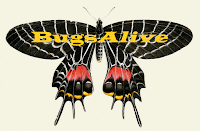Euripus nyctelius - the Courtisan
Written and photographed by Tim Stratford

Photo : Chiang Dao Nature Sanctuary, Chiang Mai, Thailand. 540m a.s.l.

Introduction
Family: Nymphalidae - Subfamily: Apaturinae - Genus: Euripus - Species: nyctelius
Euripus nyctelius is a medium size butterfly with a wingspan of 50-70mm and the males are very distinctive with their bright yellow eyes. The females eyes are somewhat darker and less noticeable. The species is sexually dimorphic and the female is also polymorphic and a mimic of no less than five different forms in Thailand alone. I have not observed or read about any particular behavioural patterns in this species apart from a few things. The males are believed to be very territorial and will behave very agressively towards any intruders on their patch. Females are rarely seen and the males are fairly elusive spending much of their time in the tree tops. Adults do sometimes feed on flowers but are more commonly seen feeding on animal dung. Unusually, both sexes mud puddle for minerals. They are not easily disturbed when feeding but when they are they will usually fly to somewhere close by and return to the same spot as soon as they think it is safe.
Distribution & Seasonality
Distribution is from northeast India in the west to southern China in the east and southwards to parts of Malaysia, Indonesia, and the Philippines. They fly for most of the year, exact months depending on location, and are multivoltine producing several generations each year. No seasonal variation in visual appearance is recorded. Habitat is low altitude primary rainforest and distrubed lowland forest. They do seem to be a species that enjoys a certain amount of shade.
Family: Nymphalidae - Subfamily: Apaturinae - Genus: Euripus - Species: nyctelius
Euripus nyctelius is a medium size butterfly with a wingspan of 50-70mm and the males are very distinctive with their bright yellow eyes. The females eyes are somewhat darker and less noticeable. The species is sexually dimorphic and the female is also polymorphic and a mimic of no less than five different forms in Thailand alone. I have not observed or read about any particular behavioural patterns in this species apart from a few things. The males are believed to be very territorial and will behave very agressively towards any intruders on their patch. Females are rarely seen and the males are fairly elusive spending much of their time in the tree tops. Adults do sometimes feed on flowers but are more commonly seen feeding on animal dung. Unusually, both sexes mud puddle for minerals. They are not easily disturbed when feeding but when they are they will usually fly to somewhere close by and return to the same spot as soon as they think it is safe.
Distribution & Seasonality
Distribution is from northeast India in the west to southern China in the east and southwards to parts of Malaysia, Indonesia, and the Philippines. They fly for most of the year, exact months depending on location, and are multivoltine producing several generations each year. No seasonal variation in visual appearance is recorded. Habitat is low altitude primary rainforest and distrubed lowland forest. They do seem to be a species that enjoys a certain amount of shade.
 |
| Female form - euploeoides (a mimic of the female Magpie Crow). Photo : Lamnamkok National Park, Chiang Rai, Thailand. 450m a.s.l. |
Lifecycle
The adult female lays her eggs singly on the upperside of a leaf on the host plant. The eggs are almost spherical in shape with vertical ridges and greeny-yellow in colour. The eggs hatch in about 3-4 days and the emergent larva eats all of the empty egg shell before starting to feed on the leaf. The young caterpillar is intitially yellow in colour but gets progressively greener after each moult. The five instar stages last around 18-20 days with the final instar reaching a length of about 40mm.
The total time from egg to adult is between 27 and 31 days. The duration of each stage is as follows. All figures are approximate :-
- Egg : 4 days
- Instar 1 : 3 days
- Instar 2 : 3 days
- Instar 3 : 3 days
- Instar 4 : 4 days
- Instar 5 : 5-7 days
- Pupa : 6-7 days
Host Plants
Known larval host plants are Trema orientalis, Trema cannabina, and Trema tomentosa from the Cannabaceae plant family.




